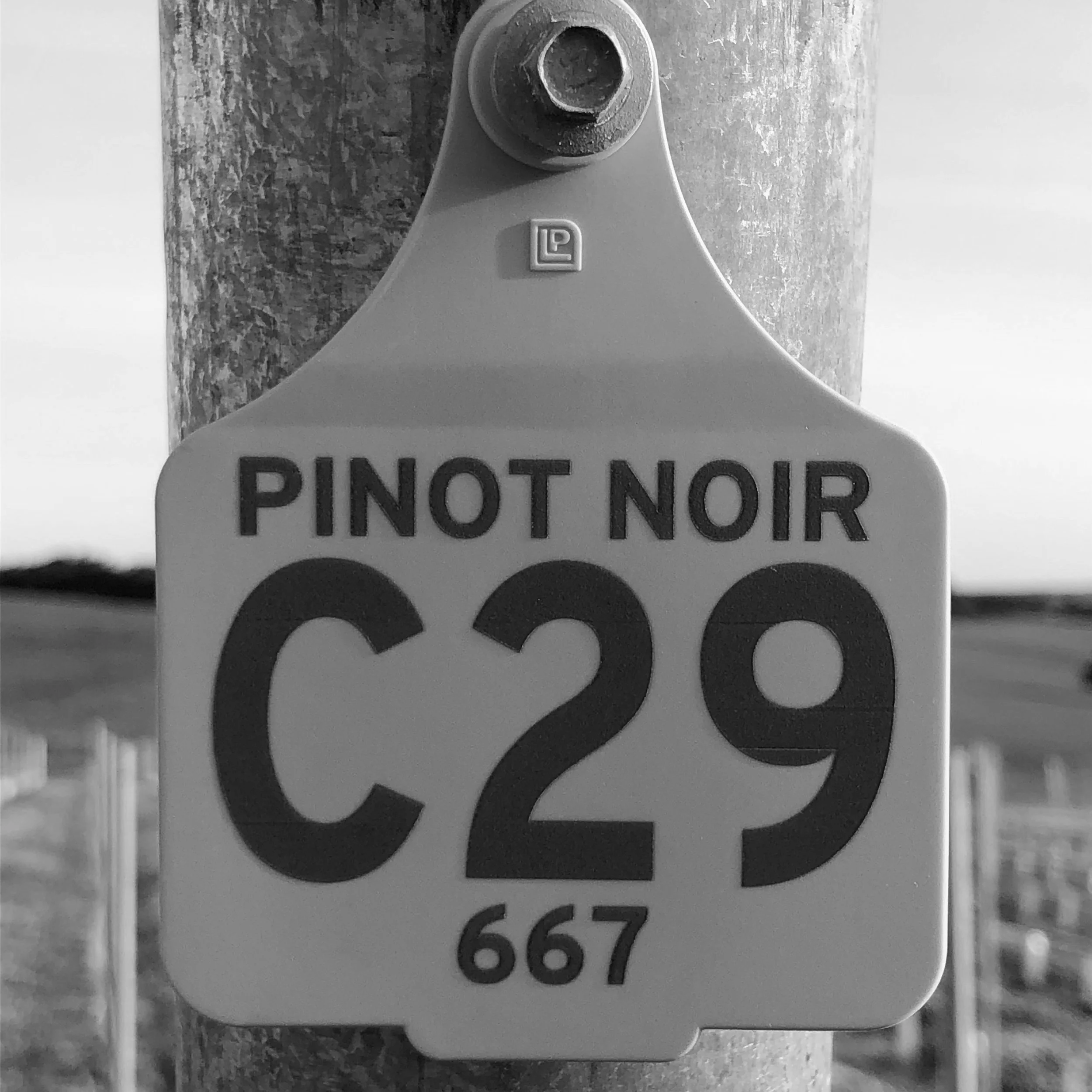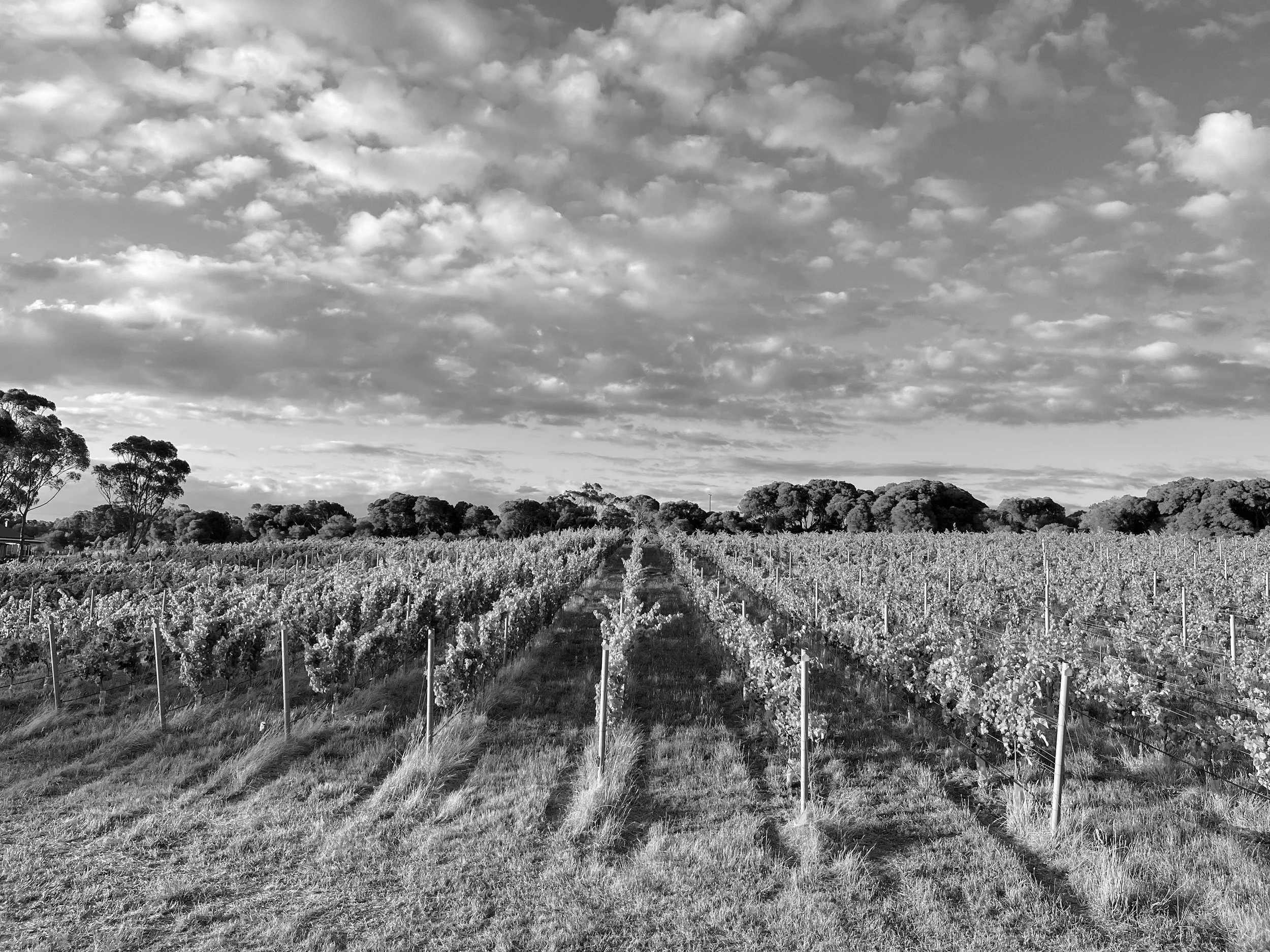Our Vineyard
Our commitment to sustainability
Mollers Lane is proudly dedicated to sustainability as a member of Sustainable Winegrowing Australia, with aspirations to achieve certification in the near future. From the outset, we have embraced sustainable practices, including the use of
Eco Trellis, which avoids harmful chemicals, promotes long-term vineyard health, and offers a more environmentally responsible alternative to treated pine.
As active supporters of the National EcoVineyards Program, we have integrated its principles into our vineyard, collaborating with the Bellarine Landcare Group and Indigenous Plant Nursery to plant over 1,000 native trees and plants. These efforts enhance biodiversity, attract beneficial insects to reduce chemical reliance, and improve the ecosystem surrounding our vines. We have also trialed under-vine cover crops, gaining valuable insights to implement across the vineyard—ensuring a holistic approach to sustainable and environmentally friendly wine growing.
Vineyard Design
We were privileged to collaborate with the esteemed viticulturist Ray Guerin, renowned for his work in planting the Giant Steps Applejack vineyard, known for its exceptional Pinot Noir. Ray provided invaluable guidance in establishing the vineyard's fundamentals, including row orientation, row and vine spacing, fruit wire height, and the selection of varietals, clones, rootstocks and vine training method.
Row Orientation: NNW 330 degrees
Row Spacing: 2.4m
Vine Spacing: 1.1m
Fruit Wire Height: 0.7m
Vines per hectare: 3,840
Training method: single guyot VSP
Vineyard Soil
In 2020, soil pits were excavated and analysed by vineyard soil expert Professor Robert White, revealing that the vineyard is rooted in sandy loam topsoil of varying thickness, underlain by a clay subsoil interspersed with gravel deposits. The soil depth remains consistent at 1.3 to 1.5 meters, where the clay transitions into weathered sandstone—a geological base well-suited for nurturing healthy vines and supporting their growth.
Varietals /Clones
Planted in 2021, our 1-hectare vineyard showcases a harmonious trio of grape varieties: Pinot Nero, Verdicchio, and Refosco. Pinot Nero flourishes in our cool maritime climate, producing refined and complex wines. Verdicchio brings a lively Italian flair, perfect for crafting crisp and refreshing whites. Refosco stands bold, with its rich colour and robust character, making it an exciting choice for red wines.
Pinot Nero
Pinot Nero, the Italian counterpart to Pinot Noir, shares a linguistic parallel with Pinot Grigio and Pinot Gris. This connection feels especially fitting, as we’ve planted two Italian varietals—Verdicchio and Refosco—that also end with the distinctive 'O' embracing the Italian charm in our vineyard.
With the goal of crafting a Pinot Nero that boasts concentration, complexity, structure, refined tannins, and remarkable length, we carefully selected the following clones:
-
Abel
This clone is characterised by intense dark fruit flavours, firm tannins, and a long, elegant finish.
This clone is highly valued for its depth, structure, and aging potential.
-
Pommard
One of the oldest and most revered clones. It is known for substantial tannins, a full-bodied
structure, and flavours of dark fruits, earth, and mushroom. This clone produces wines with excellent aging potential and a distinctive, complex character.
-
667
Known for aromatic and tannic finesse, this Dijon clone will add structure and concentration dark cherry, blackberry and earthy notes.

Verdicchio
Verdicchio adds an intriguing Italian touch, with its fresh acidity and potential for crisp whites or even sparkling wines. Grown in the Marche region of Italy, along the Adriatic coast, has been cultivated since the 14th century. Verdicchio is celebrated for its high acidity, citrus notes, and subtle hints of almond, which give it a unique and distinctive flavour profile.
It pairs beautifully with seafood, light pasta dishes, and fresh cheeses, making it a versatile choice for a variety of meals.
Refosco
Refosco is bold and exciting! its deep colour and robust structure make it a standout among reds. Distinguished by its signature red stems, it belongs to one of Italy’s oldest and most storied grape families, with origins tracing back to Roman times.
Grown in the northeastern corner of Italy’s Friuli-Venezia Giulia region, is a medium to full-bodied wine. It is renowned for its vibrant acidity, which perfectly balances its rich character. The tannins, while noticeable, remain gentle and well-integrated, lending the wine a structured yet subtly rustic charm. Great with grilled meats and rich pasta dishes with ragu.


